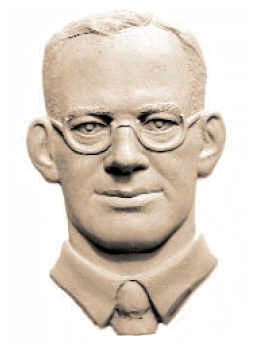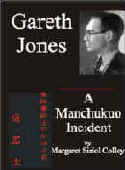Gareth
Jones, 1935
Since the arrival of the first ship-load of “government contract
labour in February 1885, until the
26th Immigrant boat “Miike Maru” in the early part of 1894, some
29,032 Japanese poured into Hawaii. During
the next three years from 1896 private immigration companies looked after the immigrants, and brought here
40,208 Japanese. In July
1898, Hawaii was annexed to the United
Slates. The contract labour
was forbidden, and over-night, Japanese labourers in Hawaii became free
labourers. Children, born in
the islands, were granted the right of American citizenship.
For a time being, the Japanese government restricted the
immigration to Hawaii, but the bar was lifted in the latter part of 1901,
and a limited number of Japanese was allowed to leave Japan. Within the
short period of five or six years more than 40,000 Japanese came. The
majority of these Japanese made Hawaii their stepping-stone and deluged
the Pacific coast states. In
1907 the ‘Gentleman’s Agreement” was drawn up, and the immigrants
from Japan were stopped. With
the passage of the Immigration Act in 1924, Japanese were excluded from
the United States. Not a single Japanese Immigrant can now come into
Hawaii.
Looking back at the past half a century, the Japanese have gone
through many striking changes. They
have built up slowly, the foundation of today, but industrially they have
not accomplished anything very striking. Only in population, have the Japanese beaten other nationalities.
Out of some 15.000 Japanese only a third are first generation
Japanese. Death has removed
many of them; others have gone back to Japan. But the second and third generation Japanese are increasing
steadily. Over 10,000 are now
exercising their right as voters, and many engaged in hopeful
occupations. These facts are most encouraging, and they strengthen our
hope of the future.
However today, the Japanese both of the first and second generation
are being put to a test. They are, in the words of the streets, “being
put on the spot.” They are seriously been questioned:
a. Have the Japanese during the past fifty years made an honest
effort toward assimilation?
b. Are the Japanese born in Hawaii truly loyal American citizens,
or can they become absolutely loyal to America?
c. Are the Japanese bringing up their children into good and
loyal American citizens?
The future of the Japanese in Hawaii, and the relations between the
two countries depend on the solution of these two problems. Japanese have been excluded from Canada. Australia, America and
Brazil. The chief reason is that “Japanese do not assimilate,”
for example, let us quote some of the outstanding arguments.
1. Mr. McClatchy. Editor of ” Sacramento
Bee,” holds that the Japanese as a race cannot assimilate. He gives three reasons:
a. “Japanese racial characteristics, heredity and religion
prevent social assimilation,
b. “Japanese government claims all Japanese, no matter where
born, as its citizens, thus preventing political assimilation.
c. “Individually and in mass with opportunity offered and even
when born under the American flag, they have shown pronounced antagonism
to assimilation.”
2. After his extensive tour of Hawaii in July, 1923 the late
Congressman Charles F. Curry of California stated:
“I do not think there is any possibility of Americanising the
Hawaiian Japanese who were born in Japan. While a majority of them may not wish to return to Japan, they are
nevertheless loyal to the Mikado ant their government, and Japan is first
in their thoughts at all times. This
is only natural in as much as they speak an alien language and live among
the alien people.
“In so far as the native-born Japanese are concerned; that
portion of them who are sent back to Japan for their education and return
to the United States just before the time when they would be required for
army service are also alien in thought and sympathy. Same result must be expected of those who are educated even in
Hawaii under the alien influences. Public
Schools in Hawaii should exert their utmost endeavour to correct these
evils. Y.M.C.A. and Sunday Schools are called upon to pay particular
attention to them.
“I am convinced more than ever that aliens ineligible to
citizenship should be excluded in the future, and that an immediate stop
should be placed upon the bringing of ‘picture brides’. All Oriental influences must be stamped out.
3. In this argument
against the injunction proceeding instituted by the language schools
against the Act 36, ex-Governor W. F. Frear said:
“The most important problem of this territory is the character of
the children who are to become our future citizens. Whether Hawaii will have a commission form of government, or
whether she will be granted statehood will be largely determined by the
character of our future citizens. Will these citizens of Oriental descent
act as the United States citizens or as the subject of Japan, or as
citizens half-American and half-Japanese is a most Important problem?”
Today the questions of commission form of government and the
statehood are being widely discussed. Naturally the qualifications and loyalty of our second-generation
are seriously questioned. We
can easily surmise that President Roosevelt came here primarily to make a
personal check on the problems of our second generation.
“To the eyes of those who came here to give us an once-over, do
the Japanese in Hawaii seem to be making honest efforts assimilate, and
are they actually assimilating? Or
as Mr Frear feared, does it look as though the Japanese are trying their
outmost to become subjects of Japan or citizens half-American? Are we able to pass these tests?
“When a person is living in a room of a large family, he must follow
the rules of that home. Otherwise
he can never get along harmoniously with the others living in the home.
We are living today in a corner of American territory under the
protection of America and are enjoying many privileges. We have an obligation to perform.
That is we must try to assimilate and bring our children up into
good and loyal American citizens. In
a sense our boys and girls are adopted children of America, and we must
see to it that they become simon-pure American citizens. If we perform this task sincerely we would be rendering a great
service to both America and Japan.”
On the eve of his departure from Seattle, Viscount Kikujiro Ishii
said:
“The Americanisation campaign which is now going on in the United
States is a nation-wide movement. As long as you are residents of America
you must make your status clear. If
you desire to assimilate, you must make up your mind to live here
permanently. If you can not assimilate, you ought to return to Japan.”
Today Japanese in Hawaii are displaying Japanese spirit in full
colour. This may be the reaction of the rise of nationalism in Japan.
Many of the Japanese schools have become Japanised. Imperial rescript is boldly
read
and taught in some of the schools. Some
teachers have openly declared that they are teaching Japanese spirit
through the medium of the Japanese language. This audacity may he the result of their mistaken idea of victory
in the legal battle. If the
Japanese go on in the present conditions, they will fail miserably
in the test. Politically and socially America may oppress the Japanese.
The doors of Canada, Australia and South American countries may be closed
more and more tightly. We
must think more of the future and remove every obstacle that hinders our
real progress.
All sorts of suggestions
on the ways and means of celebrating the Fiftieth anniversary of the first
landing of Japanese immigrants in Hawaii have commenced to appear in the
various newspapers. It is a
splendid thing to observe this
memorable day. As a fitting
celebration can the Japanese throughout the territory get together and
work for the radical change our community? As Ishii has said: “Let’s remove every trace of alien influence
and attitude” and expatriate all our children from their allegiance to
Japan. Then we will be
declaring to the world that the “Japanese can truly assimilate” and
that “our children can become loyal citizens.” This will be more suitable work than having a noisy festival.
|




